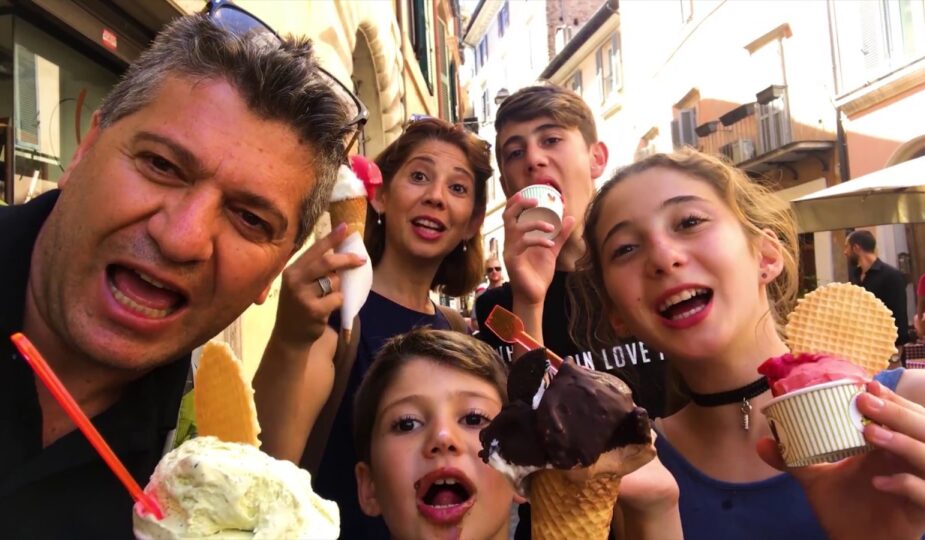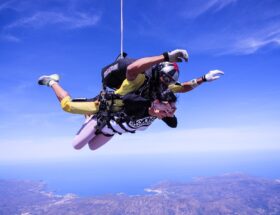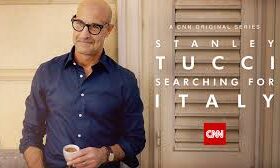During your time in Rome you should really try and see everything that it has to offer. Below we have outlined the well-known attractions, as well as some of the lesser known, but all are great for kids. The well-known attractions include the Sistine Chapel, St. Peter’s Basilica, the Pantheon and the Colosseum; as well as the Spanish Steps, Piazza Navona and the Trevi Fountain.
The Vatican Museums are within the Vatican City and consist of several exhibitions within several museum galleries. The must-sees are the Laocoon, Caravaggio’s Deposition, Raphael’s Transfiguration, Aldobrandini’s Marriage, The Good Shepherd, Belvedere’s Torsoda, Vinci’s St. Jerome and, of course, the breathtaking Michelangelo Sistine Chapel ceiling.
The Sistine Chapel is part of the Vatican Museums. Each surface of the chapel is covered with a work of art. The Last Judgment is painted on the wall opposite the entrance and the story of Christ is featured on the North Wall and the stories of Moses on the South Wall. However the main attraction which visitors come to see is the ceiling fresco by Michelangelo.
St Peter’s Basilica is perhaps the holiest and most important church in the Christian world, located within Vatican City on Vatican Hill; it is the heart of the Catholic Church. In all there are 45 altars, 11 chapels and 10,000m² of mosaics as well as beautiful marble floors. Among the valuable pieces of Renaissance and Baroque art in the Basilica is Michelangelo’s Pieta. St. Peter’s tomb is one of 100 tombs within the church; they include 91 popes, kings and queens.
The Colosseum is the most recognizable and iconic monument of Rome, if you see no other site in Rome you should see this structure. This grand stadium was constructed by the Flavian emperors. The Colosseum was used for bull fights, gladiator fights, chariot races, official events and various public forms of entertainment.
The Victor Emmanuel Monument (Vittorio Emanuele) on Piazza Venezia houses the Tomb of the Unknown Soldier and an eternal flame. The monument was erected following WWI in honor of those who lost their lives in battle. It is well-known for its grand scale.
The Pantheon was built on the orders of Hadrian between 118AD and 125AD, it functioned as a temple to all the Roman Gods. The temple was built to replace Marcus Agrippa’s temple which had burnt down in 80AD. The star feature of the Pantheon is the dome.
The Trevi Fountain (Fontana di Trevi) is the largest baroque fountain in the world. The fountain is well known from the Fellini film “La Dolce Vita”. Legend has it that if you throw a coin into the fountain and make a wish to return to Rome, your wish will be granted. If you felt like a stroll (passeggiata) any evening you could walk to the Trevi Fountain, it is especially spectacular at night when it’s illuminated. Try Il Gelato di San Crispino , Via della Panetteria 42 (near Trevi Fountain); they are open until midnight but closed on a Tuesday.
The Spanish Steps are one of the most romantic places in Rome (and the widest staircase in Europe) and attract a lot of attention from tourists. In May the steps are decorated with azaleas and once a year there is a fashion show here when the steps become the catwalk.
Piazza Venezia is the most central of Rome’s squares with many major routes coming together here; it is located at the foot of Capitoline Hill next to Trojan’s Forum. This square sees endless traffic. On the square is the monument of Victor Emmanuel, Palazzo Bonaparte and San Marco Church.
The Roman Forum is located in a valley between Piazza Venezia and the Colosseum, between the Palatine Hill, Capitoline Hill and Esquiline Hill. The area’s central square was where the Romans would gather for meetings, trials and trade.
The Palatine Hill is one of the famous seven hills on which Rome was founded and is the most centrally located. From its height of 40 meters it is surrounded by the Circus Maximus, Forum Romanum and the Colosseum. The Palatine Museum (Museo Palatino) is located on Palatine Hill within the Palace of the Caesars and houses archaeological findings from Palatine Hill.
Circus Maximus was the first and biggest arena/stadium in ancient Rome where the citizens would gather to watch chariot races, gladiator fights, processions and major events. The stadium was constructed in the valley between the Palatine Hills and the Aventine Hills. Today visitors to the site of the Circus Maximus can only see the remains and outline of the structure within a public park.
Villa Borghese is the largest public landscape park in Rome. At the center of the park is an artificial lake and an Ionic Temple dedicated to the God of Healing which stands on a small island in the lake. The park covers 148 acres and within the park grounds are several buildings, a lake, temple, fountains, statues and museums. The best known of the park museums is the Museo e Galleria Borghese housed within the former Borghese family home.
Piazza Navona is an elongated oval-shaped public square in Rome. Today it is a lively and popular social meeting point with numerous cafes, restaurants and places of entertainment which line the square. The square is the venue for many annual fairs and festivals. The main attractions of the square are the three fountains, the most famous being Fontana dei Quattro Fiumi
The Trastevere neighborhood is a colourful bohemian neighborhood on the other side of the Tiber River which is full of narrow winding cobblestone streets, great restaurants, and fun shops. It has a very authentic Roman feel. If you’re feeling up to walking, go on foot over the Ponte Sisto Bridge. There is a small playground nearby at Piazza San Cosimato. In this neighborhood the Centro Didattico specializes in construction toys and crafts. (Via dell Luce, 32).
Some recommended activities:
Visit the beautiful Santa Maria in Trastevere Basilica.
The National Museum is full of wonderful Roman artifacts, but it remains a secret. Most kids enjoy the Roman coin collection in the basement. Check it out if you have time!
Victor Emmanuel Monument – Ride the Sky elevator to the top for 360-degree views of the city.
Le Domus Romane di Palazzo Valentini. Back across the river. An archaeological excavation turned into a multi-media museum. See how the Romans lived with the help of advanced lighting effects and sounds. Reservations are recommended.
Stadio Olimpico is located towards the north of Rome, about 4 kilometres north of Vatican City. It is situated within the Foro Italico sports complex, which is enclosed by the river Tiber on one side and a nature reserve on the other.
The Capuchin Crypt – (Cripta dei Cappuccini) in Rome is an underground burial vault situated beneath a medieval church which contains the remains of four thousand Capuchin monks. The church itself, Santa Maria della Concezione was built in the 1620s by Capuchin Cardinal Antonio Barberini. When the monks moved in they brought with them the bones of at least 300 deceased friars and over the centuries more burials were added to the crypt. It can be found at Cripta dei Cappuccini, Via Veneto 27, Quirinale, Rome, 00187.



